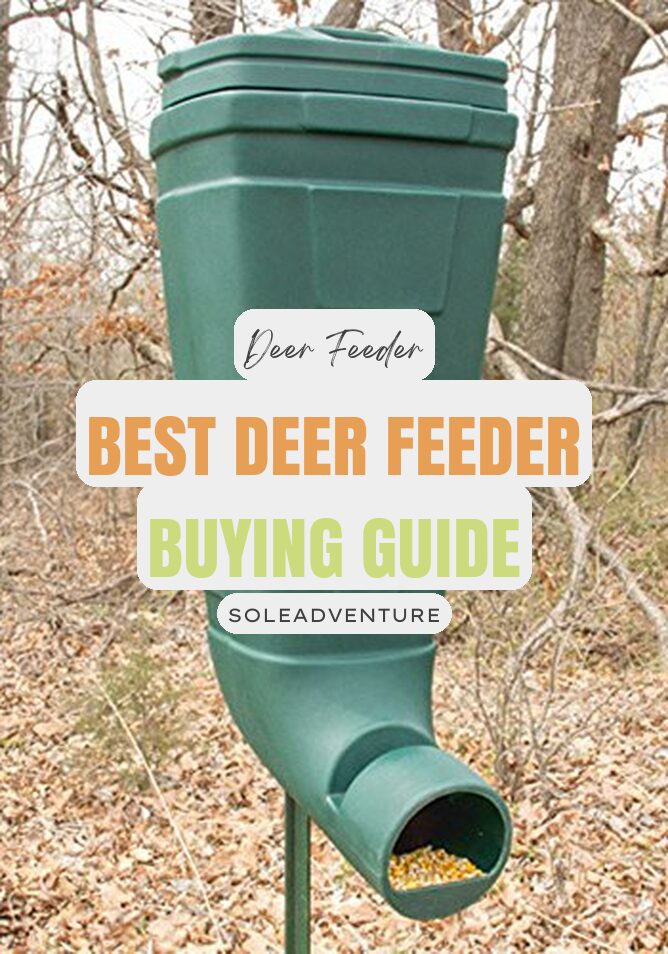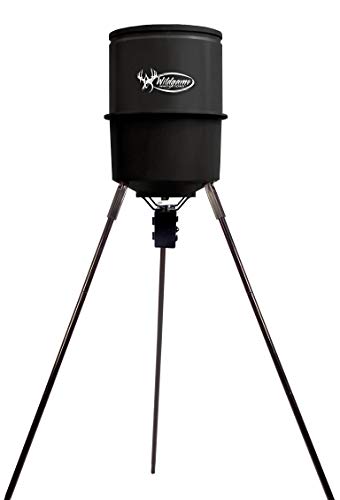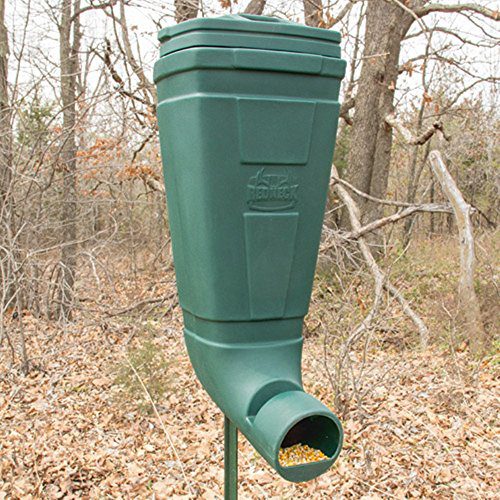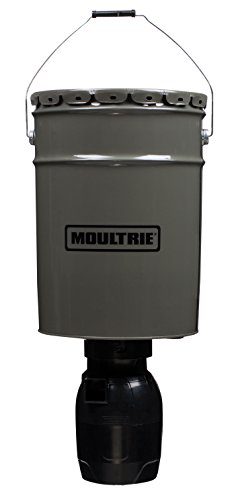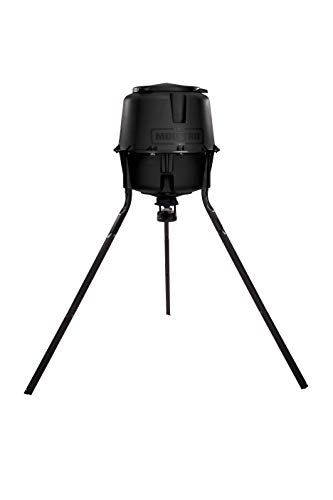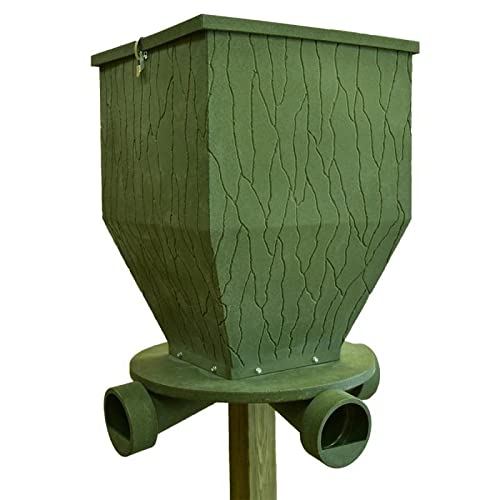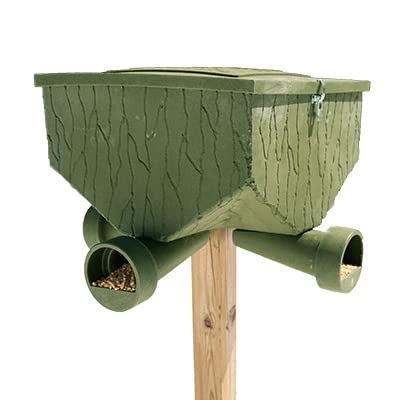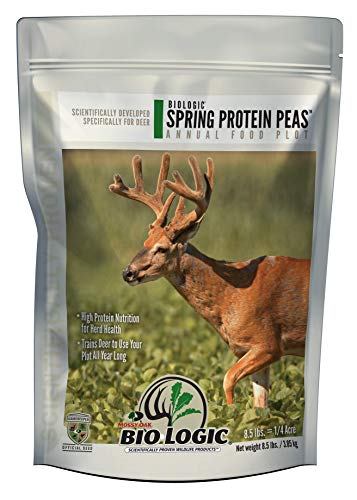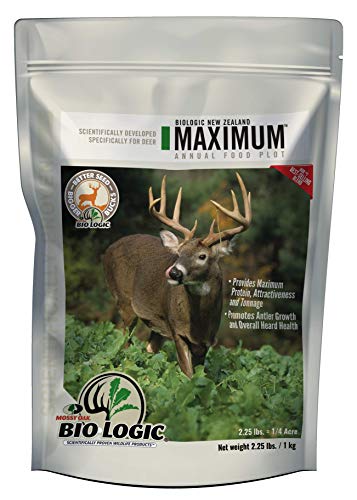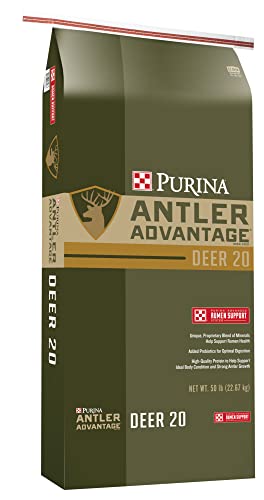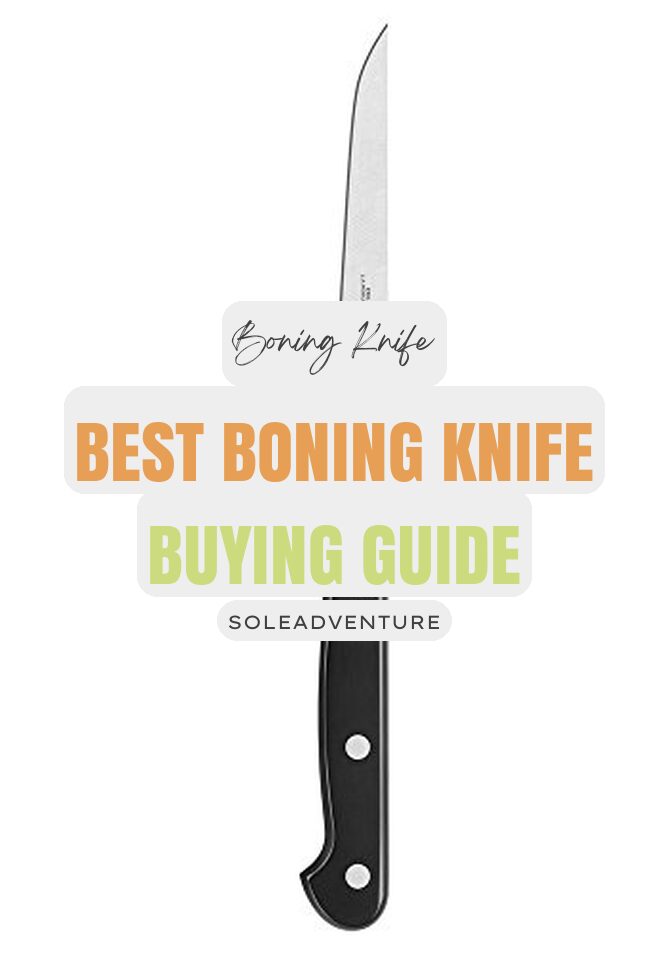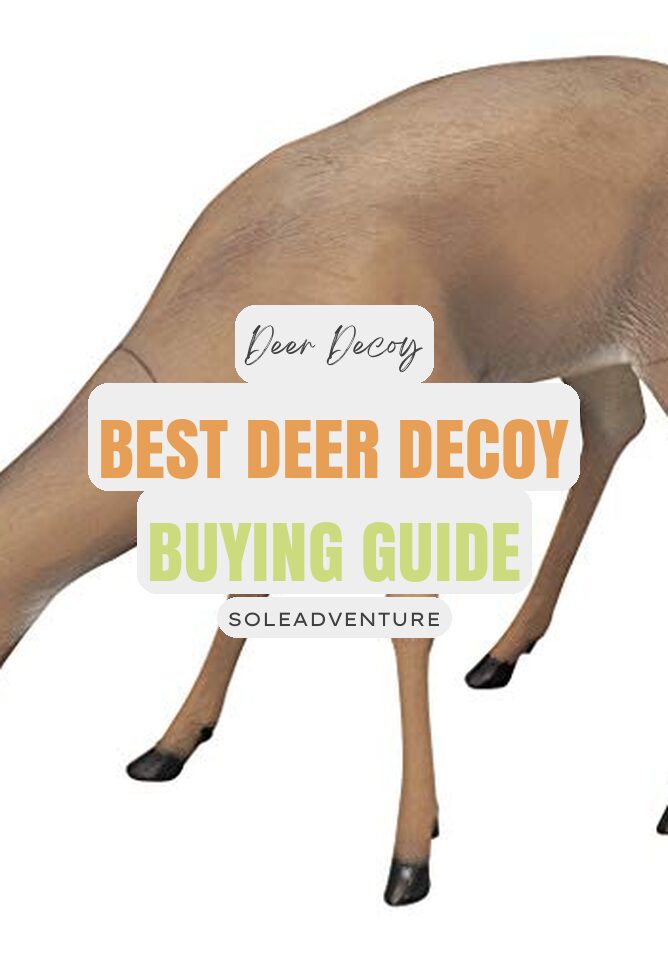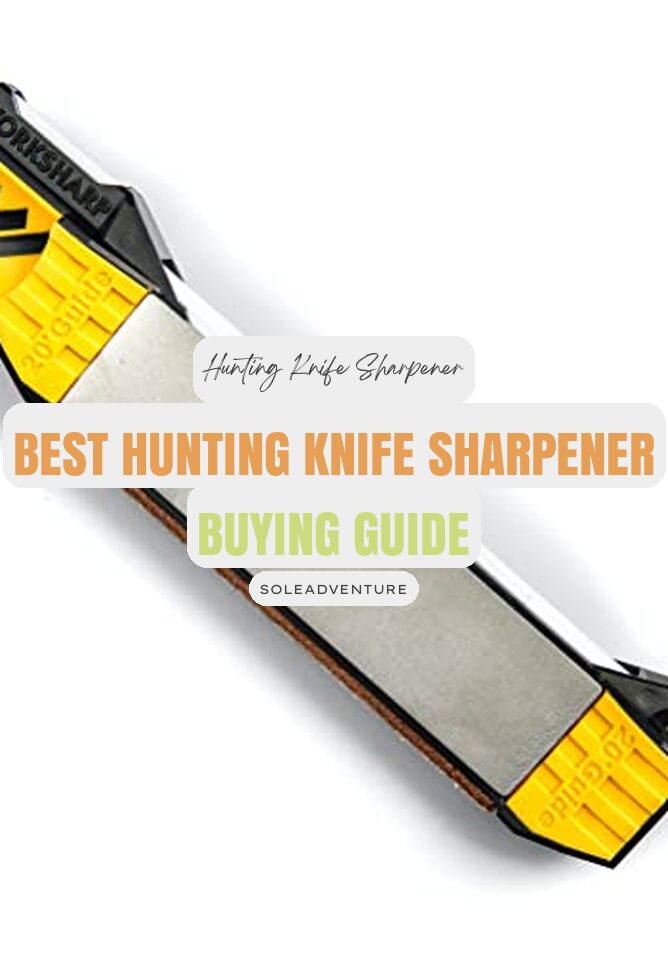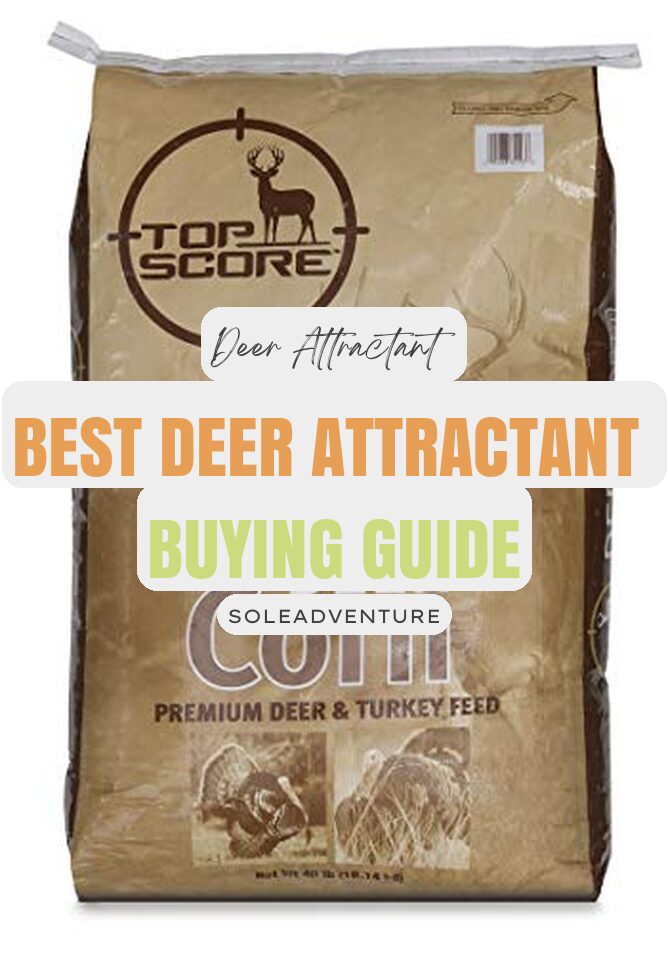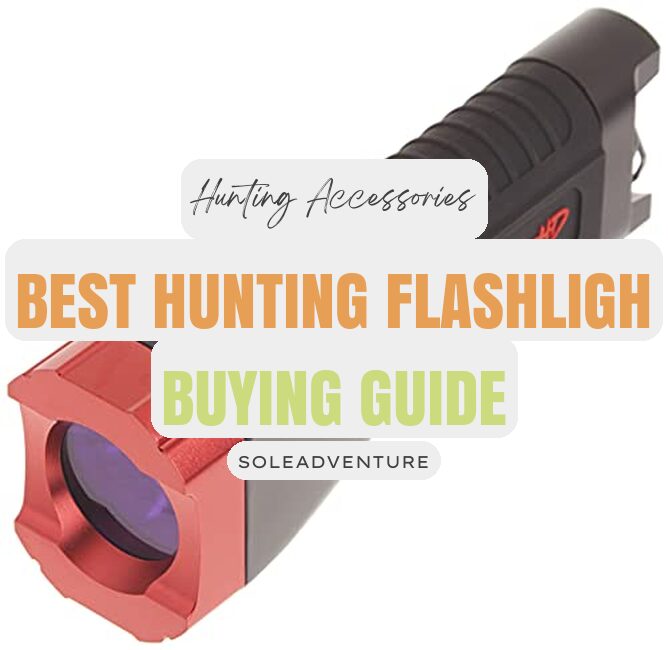Welcome, fellow deer hunters! If you’re looking to up your game and take the next step in deer hunting, then a quality deer feeder is a must-have. It’s the perfect way to attract deer to your property and give you an edge when hunting. With so many options on the market, it can be hard to decide which feeder is best for you. That’s why we’ve written this comprehensive guide to the best deer feeders of 2023. We’ll cover everything from features to price, so you can be sure you’re getting the feeder that’s right for you. Get ready to take your hunting game to the next level!
Contents
- Top 9 Deer Feeders in the market for 2023 with reviews
- Deer Feeder Buying Guide - Everything You Need to Know
- Essential Features of a Deer Feeder for Optimal Performance and User Satisfaction
- Understanding the Different Price Ranges and Features of Deer Feeders
- Factors to Consider When Selecting the Right Deer Feeder
- Types of Deer Feeders: Pros and Cons of Gravity, Automatic, and Protein Feeders
- Top Reputable Stores to Consider When Buying a Deer Feeder Online or Offline
- Conclusion on Choosing the Right Deer Feeder
- Frequently Asked Questions FAQ
Top 9 Deer Feeders in the market for 2023 with reviews
Welcome to the ultimate guide to finding the best deer feeder for your game management needs in 2023. Whether you’re looking for a gravity feeder, tripod, or hanging feeder, this guide is here to provide you with the information you need to make an informed decision. We’ve compiled reviews of the top deer feeders available, including Wildgame Innovations Tri-Pod Deer Feeder, REDNEK Gravity Feeder, Moultrie Directional Hanging Feeder, Moultrie Deer Feeder Tripod, Feedbank 300, Feedbank 150, BioLogic Pea Protein Food Plot Seed, BioLogic New Zealand Maximum Food Plot Blend, and Purina Antler Advantage Deer Feed. So if you’re looking to increase the health of your herd and improve your hunting success this season, read on to find the best deer feeder for you.
1. Wildgame Innovations Tri-Pod Deer Feeder
The Wildgame Innovations Tri-Pod Deer Feeder is an ideal choice for anyone looking for a reliable and easy to set up deer feeder. With its newly designed digital power control unit and Rivet Hardware System, this feeder can be set up in approximately 15 minutes. The durable 30 gal/225 lbs poly barrel design ensures that your feed stays secure and fresh. Additionally, the built-in funnel reduces feed waste, making it more economical.
The heavy-duty 12-piece coated leg kit provides stability and strength to the feeder, while the galvanized steel spinner plate helps disperse the food evenly. The 6V battery operation (not included) makes it easy to operate without having to worry about cords or wires.
This deer feeder is perfect for anyone looking for an easy to use and reliable way to provide food for their deer population. With its simple setup process, long lasting construction, and efficient design, you can trust that your deer will be well fed with the Wildgame Innovations Tri-Pod Deer Feeder.
Pros:
- Easy to assemble and setup.
- Feeder is heavy polyurethane and controls work well.
- Lid shuts tight and handle included to help open it.
- Wildgame Innovations customer service is great.
- Tripod legs connect easily and are sturdy.
- Timer works fine and allows for many feeding configurations.
- Battery not included but can be purchased separately and solar maintainer can be added.
- Holds a lot of corn and is wind resistant.
- Timer is easy to set and Walmart has them for a great price on Black Friday.
Cons:
- Push nails for assembly are of poor quality and should be replaced with machine screws, washers, and nuts.
- Leg wells are susceptible to developing cracks and failing under load or stress which could cause the feeder to dump out all of your feed.
- Legs don't secure to anything so if a hog bumps it, it will fall apart.
- Battery box needs to be modified for solar maintainer and the wires are a tight fit in the battery box.
- Lid does not lock down so creatures may be able to pry it off given enough time.
- After 18 months in the woods, this plastic feeder got torn apart by hogs, raccoons, and squirrels with one of the legs punching through the barrel causing it to lean way over and spill out all the corn.
2. REDNEK Gravity Feeder
The REDNEK Gravity Feeder is a heavy-duty, all-weather polyethylene feeding container that is perfect for managing and improving the size of bucks and does on your property. With no mechanical parts, it won't break down in harsh weather, making it maintenance free. It features an 80 lb capacity and a 4 x 5” feed mouth that allows deer to easily consume the feed. The easy-to-remove cover makes filling quick and easy, while the concave back and grooves allow for easy mounting to trees or fencing t-posts using ratchet straps (not included). The height to the bottom of the feeding tube is adjustable from 34 to 60 inches.
This gravity feeder is ideal for hunters who are looking for an efficient way to manage wildlife on their property. It's constructed with heavy-duty, all-weather polyethylene that will stand up to any weather conditions and won't rust or corrode over time. The large capacity ensures that there's plenty of food available for deer in your area, while the adjustable height makes it easy to customize the feeder depending on your needs. Plus, with its easy installation process, you can have this gravity feeder set up in no time!
Pros:
- Easy to install and set up
- No need for an electric fence or other deterrents to keep out pests like squirrels, raccoons, and hogs
- Feeder is sturdy and designed to keep feed dry even in wet weather
- Deer have been known to start visiting the feeder within a few days
- A single sack of corn can last for up to two weeks, reducing waste
- Feeder helps to prevent hogs from driving away deer while they’re eating
Cons:
- Takes a long while for deer to find the feeder, so it should be set up a long time before hunting season
- PVC pipe must be used to thread the T-post in order to prevent pests from climbing
- PVC pipe should not be painted in order to reduce traction for pests
- Feeder should be placed far away from any trees or branches to prevent squirrels from jumping onto it
- Some animals have been known to chew on the lid of the feeder, causing holes
3. Moultrie Directional Hanging Feeder
The Moultrie Directional Hanging Feeder is the perfect combination of simplicity and advanced features. This 6.5-gallon metal bucket has a capacity of 40 lbs, making it ideal for use along roads, ponds, trails, or food plots when 360-degree casting isn't necessary. The Quick-Lock modular technology allows the kit and hopper to connect with no tools required, and the directional shroud casts feed in a 30-degree range.
The Digital Timer allows you to schedule up to 10 feed times per day ranging from 1-60 seconds in duration, as well as specific days of the week and Hi/Med/Low spin cast settings. The timer also displays battery level indicator and feed level estimator information. All you need is one 6V battery (not included) to operate this feeder.
Whether you're looking for an easy way to provide supplemental nutrition for deer or other wildlife on your property, or just want to attract more birds into your backyard, the Moultrie Directional Hanging Feeder is an excellent choice. With its simple setup and advanced features, it's sure to meet all of your needs!
Pros:
- Easy to set up and program
- Throws cracked corn up to 5ft away
- Comes with a steel bucket
- Reliable for long periods of time
- No manual feed or test button on exterior which makes it easy to set up and use
- Original battery charge lasts a long time
Cons:
- Jamming issues if there is too much trash and powder in the corn
- Lid can be difficult to remove while it is hanging
- No manual feed or test button on exterior which makes it hard to set up and make sure it’s going to throw the right amount in the right direction
- Not good with co-op corn
- Underpowered motor that can easily become clogged up with debris
- Cannot handle small dry feeds designed for deer feeders
4. Moultrie Deer Feeder Tripod
The Moultrie Deer Feeder Tripod is the perfect solution for any hunter or wildlife enthusiast looking to feed their local deer population. This 30-gallon hopper includes a digital timer that can program up to four feed times per day, ranging from 1 to 20 seconds each. The hopper is equipped with Quick-Lock technology, which makes it easy to set up and take down quickly and securely. The metal spin plate ensures the feed is spread evenly across the area, allowing more deer to access it. It also requires four AA batteries (not included) for operation.
This feeder tripod is designed with convenience in mind. Its lightweight construction makes it easy to transport and set up anywhere you need it. It also features adjustable legs, allowing you to customize the height of the feeder for optimal performance. Its durable design ensures it will last through all types of weather conditions, while its powder-coated finish helps protect against rust and corrosion.
The Moultrie Deer Feeder Tripod is an excellent choice for anyone looking to keep their deer population healthy and well fed. With its quick setup time, adjustable legs, and durable design, this feeder tripod is sure to provide years of reliable performance.
Pros:
- Reputation of Moultrie's brand.
- Affordable price point.
- Sturdiness and durability.
- Easy to use and operate.
- Free shipping.
- Programmable timer to dispense feed when needed.
- Large capacity that can accommodate large amounts of feed.
- Easy to set up and secure lid with bungee cords.
- Long lasting batteries, lasting up to 4 months without needing to be changed.
- Lightweight plastic design won't rust like metal feeders, even in extreme cold weather.
- Excelente producto and tiempo de entrega (“Excellent product and delivery time” in Spanish).
- Sa fait la gobe sa marche très bien (“Does the job very well” in French).
Cons:
- Needs to be taller with at least one more section for better use.
- Uses AA batteries instead of regular batteries which may not be desirable for some users.
- Might not be raccoon or squirrel proof, as some critters have successfully been able to chew a hole in the side and access the feed inside, or manually turn the spinner and empty out food.
- Box arrived opened and metal disk missing, which could be a sign of a faulty feeder or missing part before it was even used by the customer.
- Motor did not work upon delivery, making it unusable until a replacement is sent or it is returned and refunded by the seller.
5. Feedbank 300
The Feedbank 300 is the perfect solution for those looking to provide a reliable source of feed for deer and other wildlife. This single post mountable feeder is designed to be mounted on one 8-foot 4×4 (not included) set 3-feet into the ground, so it won't interfere with or damage antler growth. The adjustable feeding ports allow you to control the flow of feed, making sure that your animals get just the right amount. The large, watertight cover makes filling easy and keeps feed fresh, while the feeding ports stand at an optimal height of 42-inches.
This durable and long lasting feeder is constructed from heavy duty steel with a powder coated finish to ensure years of use in any weather conditions. It's also designed with a built-in rain shield to keep your feed dry and protected from the elements. The Feedbank 300 has been tested in some of the harshest environments and has proven its reliability time and again.
Whether you're looking for a way to supplement your local deer population or simply want to provide food for other wildlife, the Feedbank 300 is an excellent choice. With its adjustable feeding ports, watertight cover, and durable construction, this feeder will provide a reliable source of food for years to come.
Pros:
- Can fill feeder from the ground
- Uses only a central 4x4 post, which prevents deer from bumping their antlers on metal
- Easy to assemble and fill
- Deer acclimated within 2 weeks of being put out
- Sturdy construction
- Secure pole can help keep hogs from knocking out the feeder
- Great for supplementing whitetails in off season
- Can hold up to 300 lbs of corn or 250 lbs of protein pellets
Cons:
- Price is expensive and has increased since 2020
- Feeder is too close to the ground, which can attract vermin and turkeys picking out individual kernels of corn
- Media could not be loaded
- Needs batteries and maintenance for timer feeders
- 4x4 post needs to be secured with sackcrete or deeper than recommended to keep hogs out
6. Feedbank 150
The Feedbank 150 is the perfect solution for feeding your deer herd. This single post feeder mounts on one 8-foot 4x4 (not included) set 3-feet into the ground, so it won't interfere with or damage antler growth. It features adjustable feeding ports that let you control the flow of feed, and a large, watertight cover that makes filling easy and keeps feed fresh. The ports stand at an optimal height of 42 inches, allowing deer to access their food without having to bend down too far.
This feeder also has several other features that make it a great choice for deer herd management. Constructed from durable steel, it is built to last and can withstand harsh weather conditions. Additionally, its simple design allows for quick and easy installation with minimal effort. Plus, the Feedbank 150 comes with a 5-year warranty for peace of mind.
Whether you're looking to supplement your deer herd's diet or simply attract more wildlife to your property, the Feedbank 150 is an excellent choice. With its adjustable feeding ports and watertight cover, this feeder ensures that your deer get the nutrition they need while keeping their food fresh and protected from the elements.
Pros:
- Supplements whitetails in the off season.
- Can hold 250 lbs of protein pellets and 300 lbs of shelled corn.
- Uses only one central 4x4 post, which is preferable to outside legs to ensure bucks don't bump developing antlers on metal.
- Easy to set up and fill.
- Deer acclimate quickly and love eating the corn and protein from it.
- Heavy duty plastic and well-made with no moving parts or batteries to worry about.
- Keeps wild hogs from eating the corn since it's not easily accessible to them.
Cons:
- Incorrect or unclear advertising on how much weight it can hold.
- Too close to the ground, making it accessible to raccoons.
- Overpriced for the quality of the product.
- Needs a sleeve on the 4x4 post to keep critters away from it.
- Not enough post above ground, which could lead to wild hogs tearing up the feeder before it can be set higher.
7. BioLogic Pea Protein Food Plot Seed
BioLogic Spring Protein Peas are an ideal choice for deer herders who want to provide their animals with high-quality nutrition during the important months of antler growth and fawn rearing. These warm season plantings are highly drought and browse tolerant, making them a great option for areas with high deer densities. They are also extremely attractive and palatable to whitetails, ensuring that they get the nutrients they need.
To plant BioLogic Spring Protein Peas, it is best to do so in full sun, although they will still perform with as little as six hours of sunlight per day. The seeds should be planted at a shallow depth of about half an inch and fertilized with 350 lbs of 0-20-20 per acre. In areas where there is a high deer density, it may be beneficial to use Biologic’s P2 Plot Protector to help the plants establish. Additionally, installing a utilization cage can help monitor forage output and browse pressure.
BioLogic Spring Protein Peas are an excellent choice for providing your deer herd with maximum nutrition during the critical growing months. Not only are they high in protein but they are also highly attractive and palatable to whitetails, making them a great addition to any food plot.
Pros:
- Easy to use for people with limited knowledge of food plots
- Produced good germination results
- Attracts deer
- Reasonably priced
Cons:
- Product was almost two years old, leading to potential germination loss before even planting
- Poor response from putting in the ground compared to other products of the same
- Unsatisfactory sprouting results in some cases
8. BioLogic New Zealand Maximum Food Plot Blend
If you are looking for a food plot blend that will provide maximum nutrition, attractiveness, and tonnage for your deer herd, look no further than BioLogic's New Zealand Maximum Food Plot Blend. This blend is made up of 100% New Zealand brassicas, which have been scientifically developed specifically for deer to promote rapid weight gain, optimum health, and massive antler growth.
The plant species in this blend mature at different rates so that there is always highly palatable forage available to the herd throughout the life of the plot- even after the first frost when sugars flow from the roots to the leaves.
This blend is extremely attractive and nutritious thanks to its carefully chosen ingredients. It contains brassica species such as turnips, kale, rape seed, radish and swedes which are all high in protein and minerals like calcium and phosphorus which are essential for antler growth and overall herd health.
BioLogic's New Zealand Maximum Food Plot Blend is an excellent choice if you want to provide your deer with a diet that will promote healthy weight gain and antler growth while also providing them with a highly attractive food source.
Pros:
- Grows quickly with moisture
- No fertilizer or lime needed
- Attracts deer
- Germinates quickly
- Good for food plots
- Bigger bag size available
Cons:
- Need rain to grow
- Flea beetles can damage the crop
- Smaller bag size available
- Expensive
9. Purina Antler Advantage Deer Feed
Welcome to Purina Antler Advantage Deer Feed! This is a premium feed designed to provide deer with all the nutrition they need for optimal health and performance. Our advanced Rumen Support System helps manage rumen pH levels, while prebiotics aid beneficial rumen microbial populations for better digestion. We also include a power-packed nutritional package of protein and energy with ideal amounts and ratios of vitamins and minerals.
Our deer feed is nutritionally balanced so deer get the nutrition they need in one feed. Plus, we’ve added strong molasses and apple flavors to attract deer to the feed so they receive the benefit of a balanced diet. Purina Antler Advantage Deer Feed is designed to help support overall health, growth, antler development, and reproductive success in deer herds.
For best results, we recommend feeding Purina Antler Advantage Deer Feed year-round or as part of a supplemental feeding program during winter months. This will ensure your deer are receiving the essential nutrients they need for healthy growth and development. With this premium feed, you can trust that your herd is getting the nutrition it needs to stay healthy and thrive!
Pros:
- Deer like this food and it is not too expensive.
- Can be used to feed deer at home or near other homes/subdivisions.
- Deer love it and come running when the bag is opened.
- Deer seem to like this food fine.
Cons:
- Pelletized, so it expands like tiny sponges if rain hits it.
- Deer don’t like it.
- Might be more expensive than some other brands.
Deer Feeder Buying Guide - Everything You Need to Know
Deer feeders have been used by hunters and wildlife enthusiasts for many years. In the early days, deer feeders were simple, homemade contraptions made from barrels or buckets hung from a tree and filled with corn or other feed. Over time, these feeders have evolved to meet the specific needs of individuals.
The evolution of deer feeders has been driven by a desire to make feeding the deer and other wildlife more efficient and effective. Today, there are many different types of deer feeders on the market, ranging from automatic feeders that release specific amounts of feed at set intervals to gravity feeders that automatically dispense food when the deer nibble at the bottom of the device.
The key benefits of deer feeders are many. They provide a reliable source of food for deer and other wildlife, helping to ensure the health and well-being of the animals in the area. They also make it easier for hunters to attract deer to specific locations, increasing the likelihood of a successful hunt.
Moreover, deer feeders also benefit those who simply enjoy watching wildlife. By attracting deer and other creatures to a designated feeding spot, individuals can observe the animals up close and enjoy their unique beauty. And for those who are environmentally conscious, deer feeders can help to mitigate the negative impact of urban development and habitat loss on wildlife populations.
In short, using a deer feeder can significantly enhance the quality of life for those who care about wildlife. With a wide range of options available on the market today, it is easy to find a feeder that meets the specific needs of the individual user.
Essential Features of a Deer Feeder for Optimal Performance and User Satisfaction
There are several key features of a Deer Feeder that are essential for optimal performance and user satisfaction. Here are the most important ones:
Capacity: The capacity of a Deer Feeder is one of the most important features to consider. A larger capacity feeder can hold more feed and require less frequent refilling.
Timer: A good Deer Feeder should come with a timer that allows the user to set automatic feeding times. This feature ensures that the feeder dispenses food at specific times, even if the user is not physically present to do so manually.
Adjustable feed rate: The ability to adjust the feed rate is crucial because different types of feed require different feed rates. Some models come with adjustable feed rates that allow the user to dispense different amounts of feed per spin.
Durability: A good Deer Feeder should be made of high-quality materials that can withstand the elements and rough handling. An ideal Deer Feeder should be rust-resistant, waterproof, and made of heavy-duty materials.
- Easy to use: A Deer Feeder that is easy to use and operate is crucial for user satisfaction. The user should be able to easily adjust the settings, change the feed type, and refill the feeder without encountering any complications.
All these features can benefit the user in several ways. A larger capacity feeder means less frequent refilling, which saves time and effort. The automatic feeding times set by the timer ensure that the deer are fed on a regular schedule, which can improve their health. The adjustable feed rate feature means the user can customize the amount of feed dispensed per spin, which ensures the deer are fed the right amount of food and reduces waste. The durability of the feeder ensures it lasts long and withstands harsh weather conditions. And finally, an easy-to-use Deer Feeder means the user does not have to go through a frustrating learning curve, which makes for a more enjoyable and efficient experience.
Understanding the Different Price Ranges and Features of Deer Feeders
Deer feeders come in a variety of price ranges, and the cost can depend on the size, features, material, quality, and brand. In general, the price range for deer feeders can be classified into three categories: budget range, mid-range, and high-end range.
The budget range of deer feeders usually costs under $100. These feeders are often made of lightweight materials such as plastic or steel, and they have basic features such as gravity-fed or timed release feeding. These feeders can work well for smaller game and can be a good option for those who are just starting in deer feeding. However, they may not be as durable or long-lasting as more expensive models.
The mid-range deer feeders cost between $100 to $300. These feeders often have more advanced features such as programmable timers, digital displays, and adjustable feed dispensing. They are generally made of sturdier materials such as metal or heavy-duty plastic, which can withstand harsher weather conditions. These feeders are often suitable for those who are experienced in deer feeding and want to invest in a more reliable and durable product.
The high-end range of deer feeders can cost anywhere between $300 and $1000 or more. These feeders are typically larger in size and have advanced features such as remote control, solar power, and multiple feeding programs. They are usually made of high-quality, durable materials such as galvanized steel, and they can withstand extreme weather conditions. These feeders are often suitable for those who are serious about hunting and need a reliable feeding system to attract and sustain larger game.
When looking for the best deals and discounts on deer feeders, it's essential to research different brands and models thoroughly. Comparing prices and features of different feeders can help you find the best product within your budget. Also, consider purchasing during off-season or holiday sales as many retailers offer discounts during these times.
When choosing a deer feeder that fits within your budget, make sure that you prioritize durability, reliability, and functionality over cost. Choose a feeder that is made of high-quality materials and has advanced features that can meet your hunting needs. Lastly, read reviews and ask for recommendations from experienced hunters to ensure that you invest in a product that will serve you well in the long run.
Factors to Consider When Selecting the Right Deer Feeder
When selecting a Deer Feeder to meet your individual needs, there are several factors to consider. Here are a few important ones:
Size: If you are feeding several deer in an area, you will need a larger feeder to accommodate them. Smaller feeders may be more suited to individual or smaller herds. Consider the amount of food you will need to store and how often it will need to be refilled.
Compatibility: Some feeders may be more suited to certain environments or situations than others. For example, if you live in an area with high winds, a tripod-style feeder may be more stable than a hanging feeder. Likewise, if you have a specific type of food you want to provide, make sure the feeder you select can accommodate it.
Durability: Look for a feeder that is built to last. Durable materials like metal or heavy-duty plastic will hold up better against the elements and wildlife than flimsy alternatives. Consider the frequency of use and how often it will face harsh weather conditions.
- Functionality: Different feeders come with different features. Some may have timers or sensors to dispense food at specific times during the day. Others may be more basic and require manual operation. Consider which features are important to you and your individual situation.
For example, if you are looking for a feeder to use in a remote area where you won't be able to frequently refill it, you may want to consider a larger feeder with a high capacity. Additionally, if you have a specific type of food you want to provide, such as corn or wheat, you will need to make sure the feeder can accommodate that particular food.
In terms of compatibility, if you are feeding deer in an area with high winds, a tripod-style feeder may be more stable than a hanging feeder. Alternatively, if you have a high deer population, a large feeder with multiple ports may be more appropriate to allow multiple deer to feed at once.
When it comes to durability, look for a feeder made of durable materials such as metal or heavy-duty plastic. This will ensure that the feeder can withstand the elements, as well as hold up against determined wildlife who may try to damage or destroy the feeder.
Finally, in terms of functionality, consider the features that are important to you. If you are looking for a hands-free option, a feeder with a timed release may be ideal. Conversely, if you are on a tight budget, a more basic, manual feeder may be the best option.
By considering these factors, you can select a feeder that meets your individual needs and will attract deer to your feeding location.
Types of Deer Feeders: Pros and Cons of Gravity, Automatic, and Protein Feeders
There are several types of deer feeders available on the market, each with their own advantages and disadvantages. Here's a brief overview of the most common ones:
Gravity Feeders: These are the simplest type of deer feeder and rely on gravity to dispense the feed. Gravity feeders consist of a hopper that holds the feed and a tube that gravity pulls the feed out of and disperses it on the ground. This type of feeder is easy to set up and doesn't require electricity or batteries. They are better suited for small to medium-sized yards and can an efficient way to feed deer for those with small budgets. However, they are an attractive target for raccoons and other animals which can empty them very quickly.
Automatic Feeders: Automatic feeders use a timer to dispense food at predetermined intervals. These feeders take the hassle out of providing a consistent feed for wildlife. They typically have both battery-powered and solar-powered options, are more expensive but can hold large amounts of food. They are designed to spread the food across a larger area than a gravity feeder, preventing the animals from overcrowding the feeder area. They are perfect for people who have large properties or land that is difficult to access. However, these often require some setup time and maintenance.
- Protein Feeders: These are feeders that supply protein-based food to the deer. They are typically used when deer need to gain weight quickly, such as in the fall and winter months when they are preparing for harsh conditions. These feeders are more expensive and typically require maintenance to keep them clean and functioning properly.
As for alternative products, there are several things that can be used as food sources for deer. For example, planting food plots is an excellent way to attract deer. However, food plots take more time and planning than installing a feeder and also require maintenance. Another option is hand-feeding, which is inefficient and likely to result in low- quality nutrition for the deer. However, it is a good way to establish trust with deer, build stronger relationships, and provide socialization opportunities.
Ultimately, the type of feeder you choose will depend on your individual setup and budget. Those with a large budget can opt for an automatic or protein feeder if they have large properties where it's difficult to access the feeder area. Those looking for a more budget-friendly option should consider gravity feeders, as they require little setup time or maintenance. For those who value trust-building and social interactions, hand-feeding and food plots may be the best options, but keep in mind that they often require more time and effort.
Top Reputable Stores to Consider When Buying a Deer Feeder Online or Offline
When it comes to buying a Deer Feeder, there are several online and offline stores that you can consider. Here are some of the reputable stores that you can check out:
1) Amazon: Amazon is a popular destination for purchasing Deer Feeders. They have an extensive selection of brands and models available at different price points. The pricing on Amazon is usually competitive, and their customer service is excellent. Amazon's return policy is also great, which gives buyers the confidence to purchase Deer Feeder.
2) Bass Pro Shops: Bass Pro Shops are well-known for their selection of hunting and fishing gear, and they carry a variety of Deer Feeders from reputable brands. They have both online and offline stores, making it easy for customers to check out their products. Prices at Bass Pro can be slightly higher than other retailers, but their customer service is excellent.
3) Cabela's: Cabela's is another popular option for purchasing Deer Feeders. They carry a wide range of brands and models, and their pricing is usually competitive. Cabela's also offers good customer service both online and in their stores, and their return policy is fair.
Tips to Avoid Scams and Fake Products:
1) Stick to reputable stores that have a good track record and a well-established reputation.
2) Do not be tempted by deals that seem too good to be true. Scammers often use low prices as a bait to lure unsuspecting buyers.
3) Check for reviews and ratings before purchasing. Genuine customer feedback can give you insight into the quality of the product and the level of customer service provided by the seller.
4) Look for authenticity labels or certificates from the manufacturer. These labels guarantee that the product is genuine and of good quality.
Ensuring the Best Value for Your Money:
1) Look for products that offer features that you need and avoid paying for features that you do not require.
2) Check for the warranties offered by the manufacturers. Longer warranties can give you added peace of mind and protect your investment.
3) Compare prices and features across different stores to ensure that you are getting the best value for your money.
In conclusion, buying a Deer Feeder is an important decision that requires careful consideration. Stick to reputable stores, avoid scams, and ensure that you are getting the best value for your money.
Conclusion on Choosing the Right Deer Feeder
In summary, when choosing the best deer feeder for your needs, it's important to consider the following factors:
Capacity: How much feed does the feeder hold? Consider the amount of deer in your area and how often you want to refill the feeder.
Type: There are two main types of deer feeders, gravity feeders and electronic feeders. Gravity feeders are more affordable and don't require batteries, while electronic feeders are more advanced with timers and spinners.
Durability: Look for feeders that are made with strong and durable materials that can withstand the outdoor elements.
Price: Consider your budget and how often you plan to use the deer feeder before making a purchase.
- Feeding Schedule: Decide what time of day you want to feed the deer and choose a feeder that can accommodate your preferred feeding schedule.
Overall, the best deer feeder for your needs will depend on your budget, size of the herd, and feeding schedule. Consider the factors outlined above and do your research before making a purchase. Remember, the ultimate goal is to provide the deer with a consistent source of feed to promote a healthy population.
As an AI language model, I am not biased towards any specific product. However, I recommend that you carefully read the reviews, specifications, and features of the deer feeders that meet your criteria before making a purchase decision.
Frequently Asked Questions FAQ
Q: What is a Deer Feeder?
A: A Deer Feeder is a device that distributes food to deer in a designated area. It can be used for hunting, wildlife observation or simply to attract deer to a specific location.
Q: How does a Deer Feeder work?
A: The Deer Feeder usually consists of a hopper attached to a barrel or tube. Food is placed inside the hopper, and a mechanism inside the feeder releases it at predetermined intervals. The food is spread on the ground, usually in a circle around the feeder, to attract deer.
Q: What types of food can be used in a Deer Feeder?
A: Common types of food used in Deer Feeders include corn, oats, soybeans, and protein pellets. It's important to note that feeding deer with food that they cannot digest properly can be harmful to their health, so they should only be given food that is safe for them to eat.
Q: Are Deer Feeders legal?
A: The legality of Deer Feeders varies depending on the state and local regulations. In some regions, Deer Feeders are legal and commonly used for hunting and wildlife observation purposes. In other areas, Deer Feeders are prohibited due to concerns for wild animal feeding or safety regulations.
Q: How often should I refill a Deer Feeder?
A: The frequency of refilling the Deer Feeder depends on the size of the hopper and the number of deer that frequent the feeding area. However, generally, it is recommended to refill the feeder every 7-10 days to keep the deer from relying too heavily on the feeder.
Q: What is the best location to place a Deer Feeder?
A: The best location for a Deer Feeder is near an area where deer are known to frequent, such as near a watering hole, in a clearing or near a treeline. It's important to ensure that the feeding area is safe for the deer and that the feeder is placed in a spot where it can be easily accessed for refilling.
Q: How much does a Deer Feeder cost?
A: The cost of a Deer Feeder varies depending on the size, type, and features of the feeder. Basic models can range from $50 to $100, while more advanced models can cost several hundred dollars. It's important to weigh the cost against the benefits when selecting a feeder, based on your individual needs and budget.

